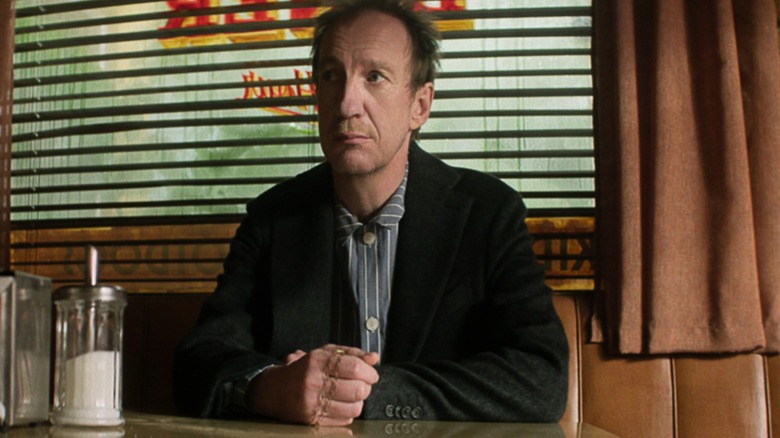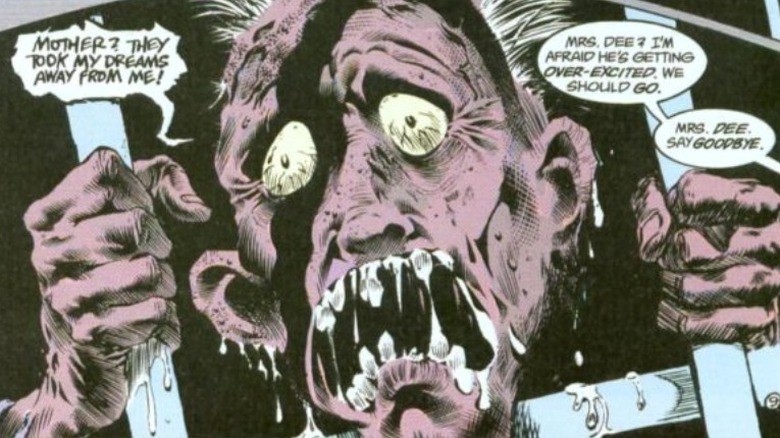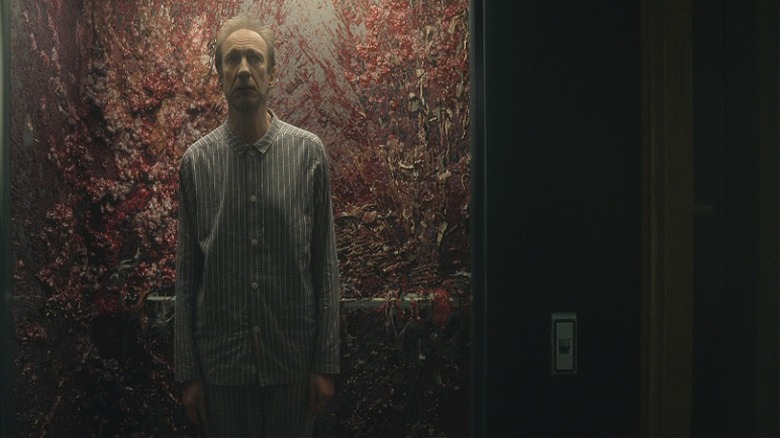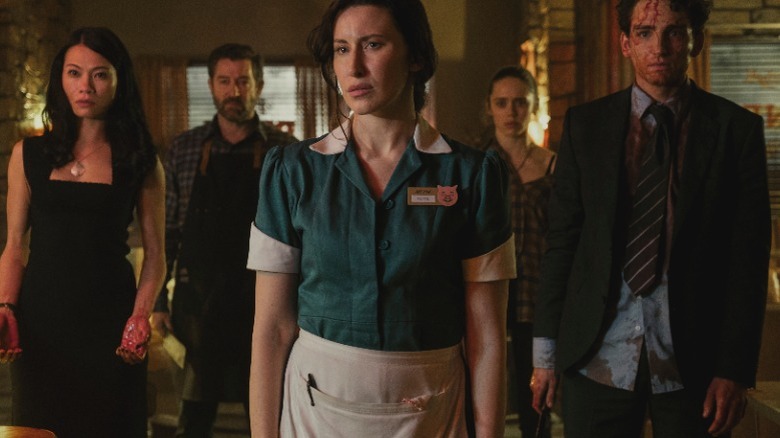Who Is John Dee? The Sandman's Version Of The DC Character, Explained
Warning: Spoilers ahead for Netflix's "The Sandman."
"I will be a wise and tolerant monarch, dispensing justice fairly, only setting nightmares to rip out the minds of the evil and wicked. Or just anybody I don't like."
As spoken by John Dee in Neil Gaiman's second issue of "The Sandman," these words perfectly sum up the kind of antagonist Dee is supposed to be. Created by Gardner Fox and Mike Sekowsky, John Dee, also known as Doctor Destiny, is a DC Comics supervillain who first appeared in "Justice League of America Vol. 1 #5." Dee's character in Gaiman's comics series has a long and complicated history — he emerges as an antagonist to Morpheus, the Lord of Dreaming, after manipulating the Dreamstone to warp reality per his wishes. In fact, Dee's reign of terror became so potent that his plans were halted by the Justice League's intervention.
In Netflix's upcoming adaptation of "The Sandman," David Thewlis will be portraying the troubled character. The show is more faithful to Gaiman's comics storyline and does not elaborate on Dee's villainous backstory as Doctor Destiny. How does Netflix's "The Sandman" paint Dee as a villain, and how different is it from his complicated comics history? Let's dig in.
The terrifying comics legacy of Doctor Destiny
John Dee, aka Doctor Destiny, used to be a criminal scientist who used his genius to build devices of terror. In "Justice League of America Vol. 1 #5," Dee invented an anti-gravity device and compulsion beam, which he then used to trap Green Lantern and infiltrate the Justice League. Before he could further his plans, the group identified the imposter and promptly sent him to prison. In successive issues, Dee created another device called the Materioptikon, which allowed him to reconstruct reality from the fabric of the dream world.
In a retcon in Gaiman's "The Sandman," Dee's mother, Ethel Cripps, gives him Morpheus' Dreamstone after she steals it from occultist Roderick Burgess' personal collection (Burgess stole the Dreamstone, among other artifacts from Morpheus first). Over the years that Dee wielded the Dreamstone's power, he modified the artifact to further his own desires. As Morpheus remained imprisoned at the time, he was unable to prevent the mad doctor from misusing the Dreamstone's immense power. Dee's machinations impacted the Waking/Dreaming worlds to such an extent that the Justice League intervened and sent Dee to Arkham Asylum.
Dee's attempts to terrorize the world do not end here. "The Sandman" comics feature Dee after his escape from Arkham, post which, he goes on a rampage to drive the world insane. This births a terrifying tale in Issue #6 of the series, titled "24 Hours," which is adapted in episode 5 of the Netflix series (more on that later). After a failed attempt to kill Dream, Dee is sent back to Arkham. In later issues of "Justice League," Dee continues using the Materioptikon to warp the realities of the superhero group, using bizarre dream logic to weaken and challenge them time and again.
How Netflix's The Sandman portrays John Dee
Dee is first introduced in the Netflix series when Cripps goes to visit him in a psychiatric facility (we do not know if it's Arkham or not) and asks him the whereabouts of the Dreamstone, referred to as the Ruby in the series. The show makes it clear that Dee is the result of an extramarital affair between Cripps and Burgess, although Dee is initially not aware of this.
Thewlis portrays Dee with tremendous pathos, as a broken, troubled man who wants to be loved by his mother. It is also hinted that Dee has a history of murdering people with aid of the Ruby and is deemed dangerous by the ward authorities. After escaping the ward, Dee is briefly approached by The Corinthian (Boyd Holbrook) and the troubled man asks a woman named Rosemary to drive him to the Ruby's location. Dee ends up frightening Rosemary by telling her about his plan to remake the world and the truth about his murderous past. Dee is disillusioned by the world's treachery and wishes everyone would be more truthful about who they are — a motivation that drives him to do what he does in the "24/7" episode.
Initially, Dee sets off with the intention to make the world a more honest, kinder place. Having undergone childhood trauma and intense loneliness, Dee craves genuine human contact deep within. However, this seemingly harmless desire is warped after he uses the Ruby to kill people, using his personal pain as an excuse to expose human hypocrisies, no matter what the cost. Even when Dee lets Rosemary go, and rewards her with the protection amulet for her kindness, his actions are laced with quiet menace, as we never know what he might do next.
The diluted, yet effective horror of the diner episode
Gaiman and Mike Dringenberg's 1989 story, "24 Hours," is considered morbidly terrifying for a reason. Horrific events take place in an ordinary 24/7 diner, thanks to Dee/Destiny manipulating reality with the Dreamstone, which he uses to control the minds of the patrons to unsettling ends. What starts off as slight changes in behavior escalates into a never-ending nightmare, wherein the patrons are forced to speak their minds, act on their basest instincts, and eventually kill one another in gruesome ways.
Netflix's rendition of the story is a much more diluted version of the original. Although the horrific aspects are aplenty and Dee's actions are as twisted as they get, the episode does not quite capture the raw terror of Dee's villainy. The comics' story offers readers no reprieve, creating a sense of doom and claustrophobia. As the episode is punctuated by scenes featuring Dream, the sense of dread is arbitrary and is only effective in parts.
Nevertheless, "24/7" positions Dee as someone who revels in chaos and the pain he inflicts on others. When Dream confronts Dee towards the end, the latter says that he has simply peeled away the lies of humanity to create a more honest world. Dream counters this by stating that while these people were imperfect, the only thing that kept them going was their unrealized dreams. Dreams provide us with the strength to persevere and the hope that the future will be brighter, and more bearable.
In the end, Dee inadvertently gives Dream his powers back and ends up back in the ward. Will John Dee strike again? Only time will tell.
"The Sandman" is currently streaming on Netflix.



